In most fruits, seeds are neatly tucked away inside the flesh, protected and hidden from view. But in some fascinating cases, evolution has flipped the script—producing fruits where seeds appear to grow outside the edible part. Whether for reproduction or animal dispersal, this botanical quirk makes for some curious and beautiful fruiting bodies. Below are 6 unique fruits where the seeds develop externally or appear to be on the outside.
1. Strawberry
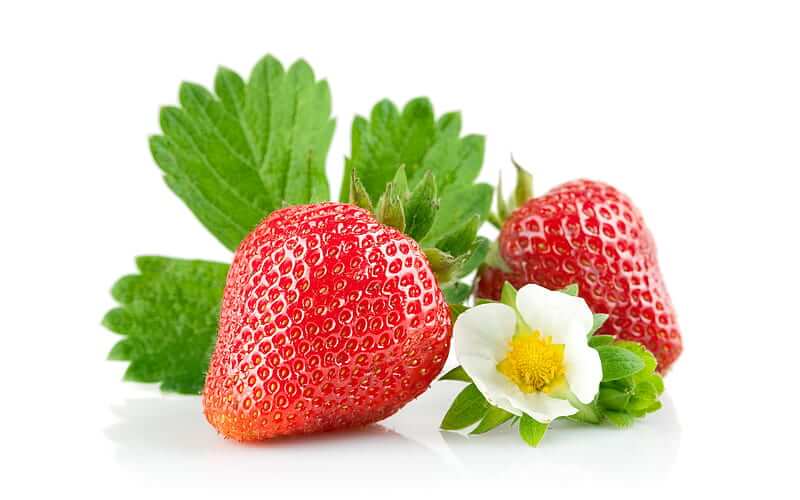
The strawberry is the most familiar fruit with visible “seeds” on the outside—but here’s the twist: those tiny specks are not actually seeds in the botanical sense. Each one is an achene, a small dry fruit that contains a seed inside. The red, juicy part we eat is not a true fruit, but an enlarged receptacle—the base of the flower. When a strawberry flower is pollinated, its many ovaries each develop into an individual achene, giving the strawberry its dotted surface. Each visible dot is a separate tiny fruit (achene) sitting on the fleshy receptacle.
2. Cashew Nut
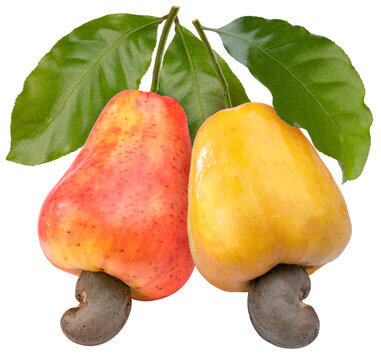
The cashew tree (Anacardium occidentale) produces a pear-shaped fruit known as the cashew apple. But the seed—the cashew nut—isn’t inside this fruit. Instead, it grows in a kidney-shaped shell that hangs outside and beneath the fleshy cashew apple. After harvest, the shell is removed and the seed is roasted to make it edible. The true fruit is a drupe, with the nut (seed) located in an external shell, attached to the base of the cashew apple.
3. Kahikatea Berry
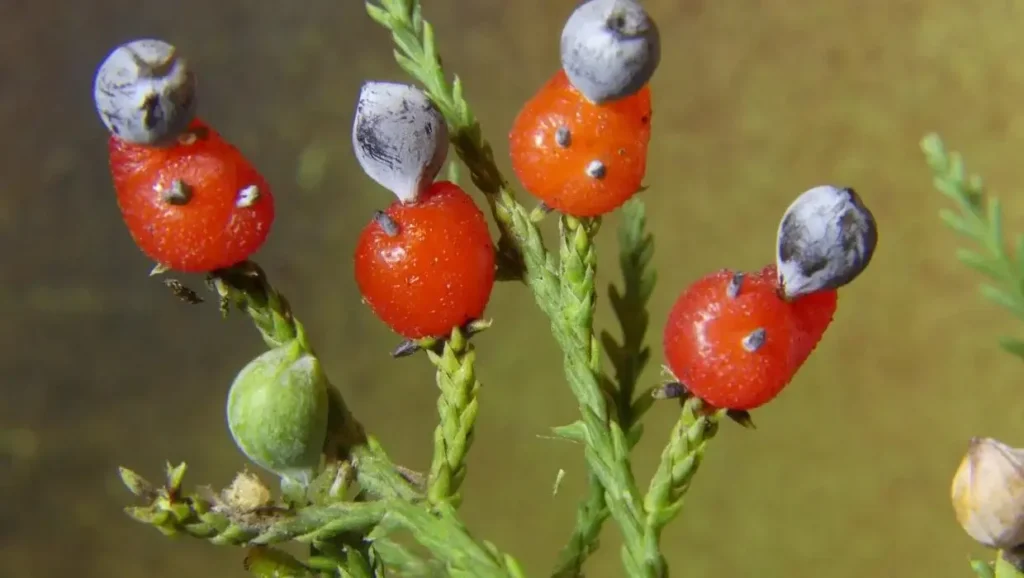
The kahikatea, a conifer native to New Zealand, produces a small, fleshy structure called an aril that surrounds its seed. This aril is not a true fruit but a modified seed appendage. The seed sits exposed on top of the bright red or orange aril, making it attractive to birds, which eat the aril and disperse the seed. The visible seed sits atop a swollen aril base, rather than being encased within a fruit.
4. Podocarpus elatus (Illawarra Plum)
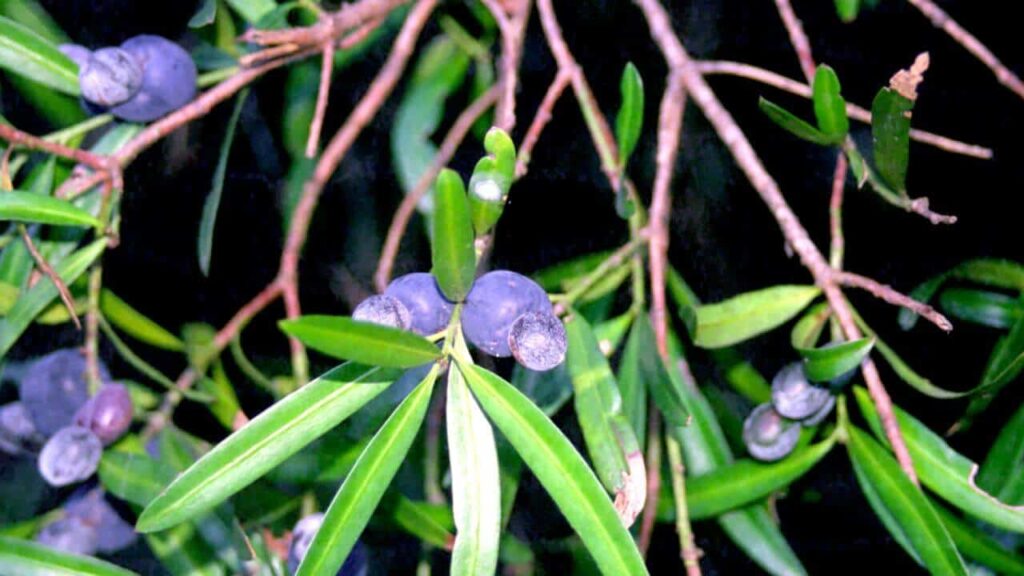
A relative of the kahikatea, this Australian native produces a similar structure. The “fruit” is a two-part system: a swollen purple aril (edible) and a hard seed perched on top. It’s juicy and plum-like in texture, but it’s technically not a true fruit. The edible portion is a modified stem or aril, while the seed is naked and externally visible on the apex.
5. Yew Fruit (Taxus species)
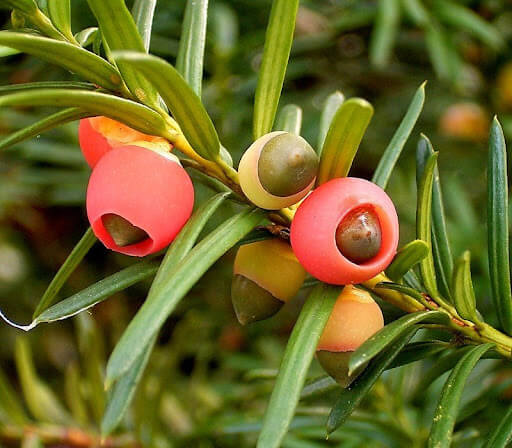
Yews are conifers, but instead of cones, they produce a bright red, fleshy aril. The single seed is fully exposed, emerging from the top of this cup-shaped structure. Birds are attracted to the red aril and eat it, but the seed itself is toxic. Interestingly, the aril is the only non-toxic part of the yew plant. The aril partially surrounds the seed but leaves most of it exposed, unlike a fully enclosed fruit.
6. Trumpet Tree Fruit (Cecropia peltata)
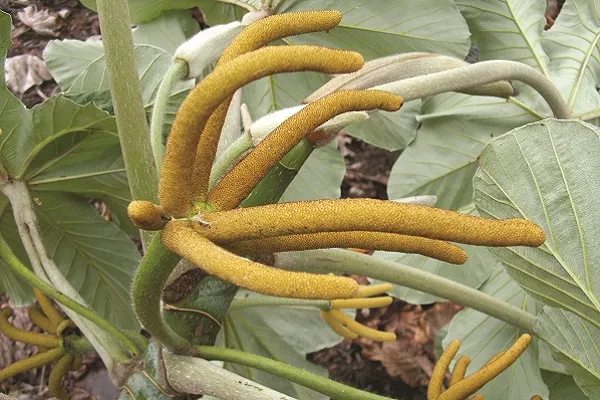
The trumpet tree produces long, finger-like fruits that also stand out for the way their seeds are arranged. Instead of being hidden deep inside, the seeds sit on the outer surface, each one wrapped in a tiny bit of soft, edible flesh. Technically, these are small achenes—single-seeded units—that cluster together to form the whole fruit. The result is a slender, cylindrical structure, often up to 12 cm long, with a sweet, pulpy texture. Native to tropical regions and notorious in some places as an invasive species, the trumpet tree still draws attention for its unusual fruiting habit and the abundance of tiny seeds displayed on the outside.
